#Oswald Hafenrichter
Explore tagged Tumblr posts
Text
From director Edmond Gréville comes THE HANDS OF ORLAC (1960)! Starring Mel Ferrer, Christopher Lee, Lucile Saint-Simon and Dany Carrel, will this British and French co-production be the best adaptation of the Maurice Renard novel yet?
Context setting 00:00; Synopsis 17:12; Discussion 33:57; Ranking 55:28
#the hands of orlac#les mains d'orlac#maurice renard#edmond greville#donald taylor#john baines#mel ferrer#christopher lee#lucile saint-simon#dany carrel#british lion films#cfdc#claude bolling#oswald hafenrichter#desmond dickinson#podcast#horror#classic horror#SoundCloud
5 notes
·
View notes
Text

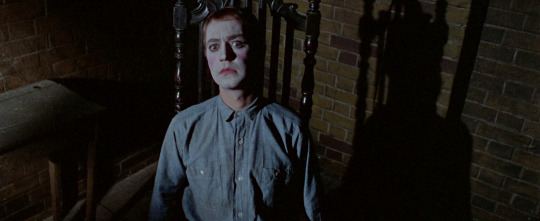
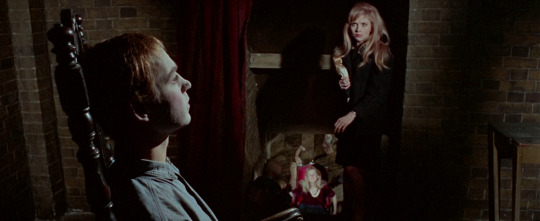

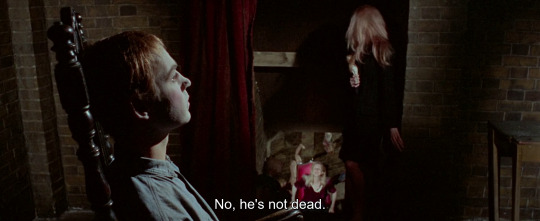
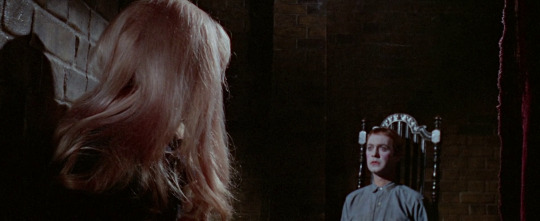


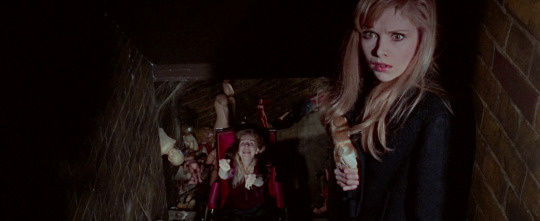

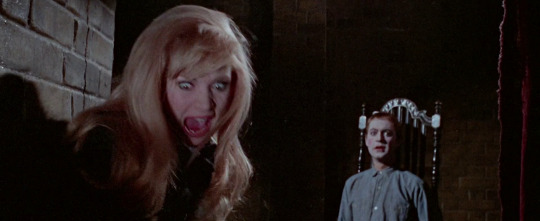
The Psycopath (Freddie Francis, 1966).
#the psycopath#freddie francis#robert bloch#Margaret Johnston#Judy Huxtable#John Wilcox#Oswald Hafenrichter#bill constable#scott slimon
5 notes
·
View notes
Photo

- You must come to your senses. You must recover, whatever it takes. - Recover? From what? - You're not allowed to love me... so much.
Mädchen in Uniform, Leontine Sagan (1931)
#Leontine Sagan#Christa Winsloe#Friedrich Dammann#Hertha Thiele#Dorothea Wieck#Ellen Schwanneke#Emilia Unda#Hedy Krilla#Reimar Kuntze#Franz Weihmayr#Hanson Milde Meissner#Oswald Hafenrichter#1931#woman director
63 notes
·
View notes
Photo

Bobby Henrey and Ralph Richardson in The Fallen Idol (Carol Reed, 1948)
Cast: Ralph Richardson, Michèle Morgan, Sonia Dresdel, Bobby Henrey, Denis O’Dea, Jack Hawkins, Walter Fitzgerald, Dandy Nichols, Joan Young, Hay Petrie, Dora Bryan. Screenplay: Graham Greene, based on his story. Cinematography: Georges Périnal. Art direction: Vincent Korda. Film editing: Oswald Hafenrichter. Music: William Alwiyn.
The Fallen Idol is usually categorized as a thriller, and it's undeniably suspenseful, but it's really a moral fable in which everyone is ensnared in their own lies. The suspense is generated by the fact that the audience knows the truth. Philippe (Bobby Henrey) is the young son of an ambassador, living in the embassy in London's Belgrave Square. His mother has been recuperating from a long illness in their home country, and when his father goes to see her, Philippe is left in the care of the butler, Baines (Ralph Richardson), and his wife, the housekeeper (Sonia Dresdel). Philippe idolizes Baines, who entertains him with made-up stories about his adventures in Africa -- in fact, he has never been out of England. Mrs. Baines, on the other hand, is strict and fussy, so he has learned to be sneaky about things like the pet snake he is hiding from her. When Mrs. Baines punishes him one day by sending him to his room, Philippe climbs down the fire escape and follows Baines to a cafe, where Baines is meeting with Julie (Michèle Morgan). When Philippe surprises them, Baines pretends that Julie is his niece, and persuades Philippe not to talk about her around Mrs. Baines. But Mrs. Baines has learned that her husband is seeing another woman, and she tells him that she's going away for a few days, then secretly stays behind to spy on him. All of this deception comes to a head with an accidental death that looks a lot like murder, with Philippe as a key witness. But Philippe has been so confused by the lies he's been told and the ones he's been asked to tell, that when the police question him he is in danger of leading them into a serious error of justice. Director Carol Reed brilliantly manages to hold most of the film to Philippe's point of view, giving the audience the double vision of what is actually happening and what Philippe thinks is happening. Nine-year-old Henrey, who had no significant film career afterward, is splendidly natural in the role, and Richardson brings a necessary ambiguity to the part of Baines. The film is also enlivened by Greene's secondary characters, including a chorus of housemaids who comment on the action, a clock-winder (Hay Petrie) who breaks the tension of an interrogation, and a scene at the police station where the cops and a prostitute (Dora Bryan) try to figure out what to do with Philippe, who has run away after the accident, barefoot and in pajamas, and refuses to tell them where he lives.
1 note
·
View note
Video
youtube
#Dr. Who and the Daleks#Gordon Flemyng#Milton Subotsky#Max J. Rosenberg#The Daleks#Terry Nation#Peter Cushing#Roy Castle#Jennie Linden#Roberta Tovey#Malcolm Lockyer#Barry Gray#John Wilcox#Oswald Hafenrichter#BBC-TV Productions#Amicus Productions
0 notes
Text
Video Essay: The Third Man – The Editing Of…
A simple look at how Carol Reed directed and Oswald Hafenrichter edited, one of the greatest character introductions of all time. A great video from Love Of Film. The Third Man – The Editing Of… from Love Of Film on Vimeo. http://dlvr.it/QJpQLh
0 notes
Photo

Mädchen in Uniform (Leontine Sagan & Carl Froelich, 1931).
#mädchen in uniform (1931)#hertha thiele#leontine sagan#carl froelich#reimar kuntze#franz weihmayr#oswald hafenrichter
29 notes
·
View notes
Photo

Joseph Cotten and Alida Valli in The Third Man (Carol Reed, 1949) Cast: Joseph Cotten, Alida Valli, Orson Welles, Trevor Howard, Bernard Lee, Paul Hörbiger, Ernst Deutsch, Siegfried Breuer, Erich Ponto, Wilfrid Hyde-White, Hedwig Bleibtreu. Screenplay: Graham Greene. Cinematography: Robert Krasker. Art direction: Vincent Korda. Film editing: Oswald Hafenrichter. Music: Anton Karas. It's my contention that the mark of a great film is the density of its texture, its ability to let you find something new or different, or simply to remember a forgotten moment, each time you watch it. I have to admit that I wasn't much looking forward to rewatching The Third Man, but I felt obliged since I hadn't seen it for some time and I do have it on my list of great movies. I knew what was coming: the great doorway revelation, the Ferris wheel conversation, the chase through the sewers, and Anna walking toward and past Holly along an allée of pollarded trees. But Carol Reed's film is full of so many incidentals that bring even familiar scenes to life. For example, when Anna is picked up by the international police -- a force made up of members of each of Vienna's occupying forces -- she's allowed to pack a bag. It's the Frenchman who reminds her that she has forgotten her lipstick. Touches like this, or Anna's landlady protesting in German that needs no subtitles to get its point across, are essential to the film's greatness. I had forgotten the demon child who fingers Holly as a murderer after the porter's death. I hadn't realized how Robert Krasker's expressionistically tilted camera in much of the film is counterpointed by his concluding shot, the long, foursquare, devastatingly symmetrical take of Anna's walk along the allée. To be sure, there are things that don't quite make sense: Why is a man selling balloons at night in the deserted Vienna streets? And the light that reveals Harry Lime in the doorway comes from no plausible source. But these are moments for quibblers, not for those who luxuriate in cinematic poetry.
0 notes
Photo










The Third Man (Carol Reed, 1949).
#the third man#carol reed#robert krasker#oswald hafenrichter#dario simoni#orson welles#sesión de madrugada#sesiondemadrugada#movie stills#movie frames#diego salgado
134 notes
·
View notes
Photo










The Third Man (Carol Reed, 1949).
#the third man (1949)#carol reed#oswald hafenrichter#robert krasker#dario simoni#orson welles#sesión de madrugada#sesiondemadrugada#movie stills#movie frames#diego salgado#graham greene
541 notes
·
View notes
Photo









The Third Man (Carol Reed, 1949).
#the third man#carol reed#Oswald Hafenrichter#robert krasker#dario simoni#orson welles#alexander korda#graham greene#sesión de madrugada#sesiondemadrugada#diego salgado#movie stills#movie frames#the third man (1949)#el tercer hombre#el tercer hombre (1949)
4K notes
·
View notes